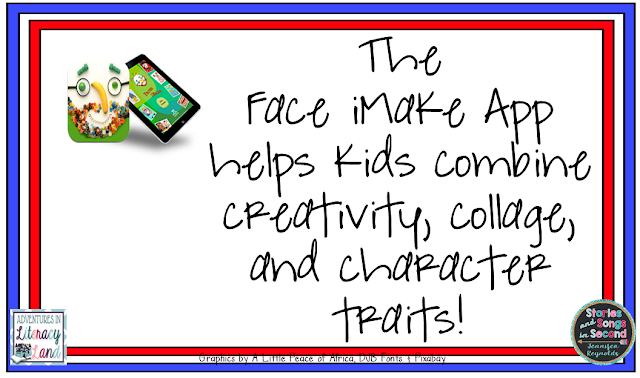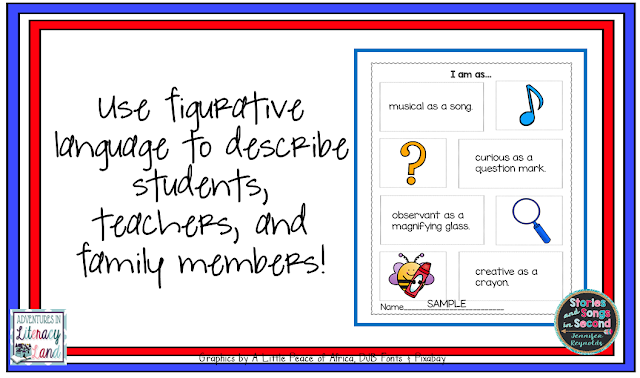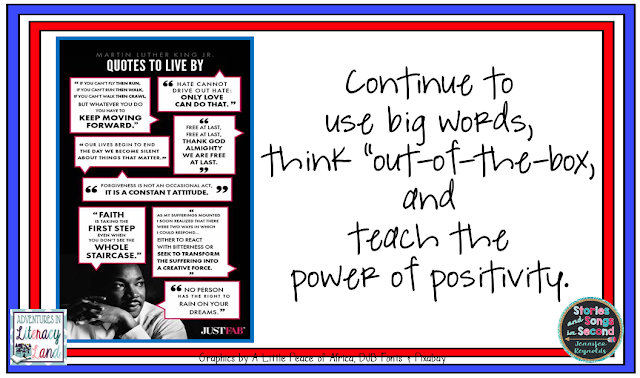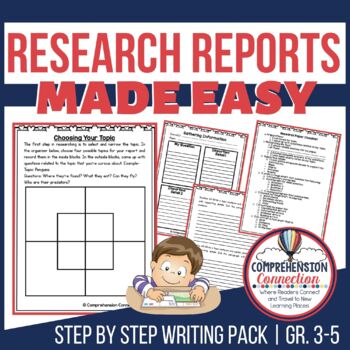Thank you for stopping by to read about one of my FAVORITE ways to integrate art into language lessons! Please indulge me while I sing the praises of and wax poetic about Hanoch Piven and his picture books!
Oh picture books by Hanoch Piven! How do I love thee?
Let me count the ways.....
- Collage illustrations made with quirky and colorful everyday items. Click {HERE} to see a gallery of portraits an his inspiring TED Talk.
- Repetitive, patterned text that encourages students to "write their own version of the story."
- Extensive use of similes, that provide great models for student learning to use figurative language in their own writing.
- Anecdotal facts about famous people that highlight a personality quality or character trait not often depicted in history books or the news.
- Encouragement given to young readers, writers, and artists to "look at the world in a new different, playful way."
- "Faces" or caricatures made with found objects or "happy accidents" that not only represent the outside features of the person, but also symbolize their inside personality traits.
- Art created without pencil and paper that encourages descriptive writing and tells a story.
- iPad app called FACES iMAKE that lets students create their own collages without you having to collect a variety of materials for them to use. Creativity without clutter at it's finest!
Get Creative With the Picture Books and iPad App
by Hanoch Piven!
If you are TIRED of the same old research report or timeline formats you've used with your primary grade students to gather facts about famous Americans, why not encourage them to create caricatures and then use figurative language templates to expand upon and share what they've learned with their peers? Studying biographies in this "out-of-the-box" fashion is sure to interest and engage your students!
Piven's What Are President's Made Of? and What Are Athlete's Made Of? both have a wonderful format where each famous person is defined by their most outstanding character trait, a collage made of real-life objects that symbolize achievements, interests, or important aspects of their life, and a lesser-know anecdote about them. For example, the true story of how Washington extinguished a neighborhood fire at the age of 67 is captioned by this succinct sentence.....
George Washington is....made of good deeds.
I created this FREEBIE that I am going to use with my second graders as we learn more about the lives of people that made America great, and I thought that you might like it too! If you download it, please be kind and leave thoughtful feedback! You will find it {HERE} in my store.
Free Writing and Collage Templates!
Include Photos to Spark Discussions about Character Traits of Famous Americans!
Use Figurative Language To Describe Friends, Teachers & Family Members!
Check Out This Other Book Companion Resource!
Find it {HERE}!
Teach the Power of Positivity!
As always, thank you for your continued interest and kind support of Adventures in Literacy Land! We hope that you continue to find our posts full of inspiration, new ideas, and useful materials that help you help children love reading and writing!
Be sure to visit me over at my personal blog, Stories and Songs in Second, for more ideas that will help you work "smarter not harder" in your classroom! You might also be interested in this Pinterest board of Black History Month ideas I've compiled!
Be sure to visit me over at my personal blog, Stories and Songs in Second, for more ideas that will help you work "smarter not harder" in your classroom! You might also be interested in this Pinterest board of Black History Month ideas I've compiled!
PIN FOR LATER
Keep calm and teach on!












































